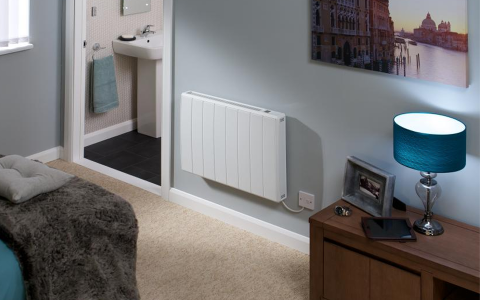Building Regulations in England & Parts L, F and O
With the transitional period now over, the updated 2022 Building Regulations Part L, Part F, and the new Part O, became legally enforceable for all new residential projects.
This is the biggest regulatory change the construction sector has seen in the last 40 years and a stepping stone in our transition away from fossil fuel systems toward decarbonised homes and the electrification of heat - and ultimately, the Future Homes Standard. This shift will impact the way we design buildings and specify technologies.
Have you decided which technologies to specify to achieve compliance for your next residential project?
The new English Building Regulations came into law on the 15th of June 2021. For projects with existing planning permission there is one year transitional arrangements period that applies on plot-by plot basis.
The updated Part L outlines the four compliance metrics for new developments: primary energy target, carbon emissions target, fabric energy efficiency target, and minimum standards for building fabric and building services.
The ventilation system choice under the updated Part F is linked to aritightness as we look to increase indoor air quality. New Part O offers modelling to help mitigate the risk of overheating in buildings.
We designed a simple guide to the changes to Part L and Part F, and the new Part O, and discuss what they may mean for your project.
Our range of HVAC solutions aim to provide future proof technologies to building projects over various sectors.
Request our presentation on Building Regulation changes that answer the most frequently asked questions.
Latest News
Our news section cover building regulations, what the changes to Part L, F, and the new Part of O entail, and what this means for HVAC specification.

Tackling fuel poverty with Quantum
More than 9,000 homes will benefit from the first payments made by the National Grid’s £150m Warm Homes Fund[1] in an effort to address the UK’s fuel poverty problem. However, electric heating is often left unaddressed from such schemes, resulting in a failure to support many homes that are in need.

Surviving the cold snap with Dimplex
The ‘Beast from the East’ is now in full swing, with the country potentially facing the coldest weather since 1991. With temperatures dropping as low as -8.9°C in some places, your regular heating may not be enough to cope with the sudden cold and we find ourselves struggling to sleep, get out of from under the duvet and go about our day-to-day lives due to the freezing temperatures. With our wide range of portable heaters, you can be sure to find the perfect solution to maintain warmth where you need it most during this cold spell.

Gas deficit warning highlights potential of smart electric appliances
Today’s warning from National Grid that current demand for gas could outstrip supply is another demonstration of why we must continue to invest in lower carbon energy sources, Glen Dimplex Heating & Ventilation says.











